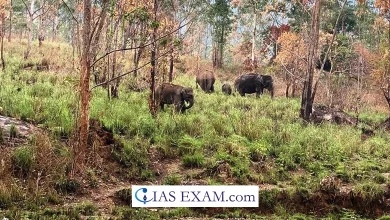Daily Current Affairs for UPSC
6th International Conference on Disaster Resilient Infrastructure
Syllabus- Disaster Management [GS Paper-3]

Context
The Prime Minister has recently addressed the 6th edition of the International Conference on Disaster Resilient Infrastructure.
Key Highlights
- CDRI is a global partnership of worldwide Governments, UN organisations and programmes, multilateral development banks and financing mechanisms, the private sector, instructional and knowledge establishments.
- CDRI was released by the Prime Minister for the duration of the United Nations Climate Action Summit in 2019, at New York.
- Members: 31 Countries, 6 International Organizations and a couple of private sector organisations.
- Secretariat: New Delhi
- Theme for 6th ICDRI: Investing recently for a more resilient future.
What is Disaster Resilient Infrastructure?
- Disaster Resilient Infrastructure (DRI) refers to the layout and creation of infrastructure systems that can face up to, adapt to, and swiftly get over challenges.
- This resilience guarantees uninterrupted important services even during calamities.
- As urbanization and national growth accelerated, infrastructure, such as power, water, and transportation was more important.
Need for the DRI
-
- Disasters exacerbated by climate change are diminishing infrastructure investments internationally.
- Flash floods in megacities like New York and Seoul claimed many lives and crippled urban infrastructure systems.
- Earthquakes in Morocco and Turkey are not only devastating for infrastructure, but also for lives and livelihoods.
- A cloudburst brought about glacial lake overflow in Sikkim claiming many lives, inflicting a huge damage to the important infrastructure including roads connecting the mountain state of India.
- Resilience during Disasters: These consecutive catastrophe occasions serve as a stark reminder of the critical importance of designing and making an investment in infrastructure that is resilient at some stage in unpredictable failures.
- Future Outlook: It is now expected that by 2030, without high investments in urban cities globally in opposition to capacity threats, natural calamities should inflict an annual financial burden of about US$314 billion on cities.
- Therefore, transitioning to Disaster Resilient Infrastructure (DRI) and flexible city strategies is crucial for improving the life of people.
- With the growing threats of climate change intensifying natural disasters, the shift towards DRI isn’t just strategic—it’s crucial for financial stability and human rights.
- Pathways to Make Infrastructure Disaster Resilient
-
-
- At the center of Disaster Resilient Infrastructure (DRI) is information of evolving dangers, like moving cyclonic patterns due to global warming.
- This knowledge enables setting up suitable building blocks and design standards, critical components that pave the way for incorporated resilience across various sectors.
- Tailored infrastructure layout, along with the ones attentive to flood dangers or preparatory sports like pre-monsoon drain cleansing, solidifies a system’s catastrophe resilience.
- Regular infrastructure threat assessments are pivotal to discover vulnerabilities in major sectors like transport, electricity, and telecommunications.
- These assessments, bolstered through chance mitigation strategies, shield against capacity damages.
- Localized reviews in towns and cities similarly contribute essential statistics for holistic planning.
-
- India’s Pathway to DRI
-
- India’s direction to resilience encompasses improving disaster danger comprehension across numerous landscapes, strengthened by geographic Information systems (GIS) mapping and revolutionary technology.
- Effective DRI necessitates the confluence of records-driven infrastructure making plans, strong chance-informed investments, and propagation of early caution structures.
- Further, significant to attaining DRI is the collaboration between all governance tiers, academia, private organisations, infrastructure specialists and local groups.
- For instance, the successful implementation of the Integrated Flood Risk Management Plan (IFRMP) in Assam’s River Basins (Beki, Buridehing, and Jiadhal) targeted a multi-disciplinary method related to key stakeholders.
- The undertaking decreased flood and river erosion risks for about 100,000 human beings alongside the Beki and Buridehing rivers, and 10,000 may have access to updated flood shelters.
Conclusion
- Building a disaster-resilient infrastructure is a complicated challenge, requiring a blend of strategic planning, innovation, finance, and most importantly, a collective method.
- Nations need to champion these components, ensuring they are not only prepared for future calamities however also poised for sustainable growth.
Source:The Indian Express
UPSC Mains Practice Question
Q.What do you understand about disaster-resilient infrastructure? Highlight the role that can be played by the Coalition for Disaster Resilient Infrastructure (CDRI) in this regard. (250 words)





.png)



